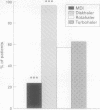Abstract
BACKGROUND--The percentage of patients inhaling their medication effectively varies widely, according to methods of assessment and inhalers used. This study was carried out to assess differences among four types of inhalers using inhaler-specific checklists. METHODS--Inhalation technique was evaluated in adult patients with chronic obstructive pulmonary disease (COPD). Inhalers investigated were either metered dose inhalers (MDIs) or the dry powder inhalers Turbohaler (Turbuhaler), Diskhaler, and Rotahaler. Errors were recorded against inhaler-specific checklists. From these, scores were derived by dividing the number of items correctly completed by the total number of items on the checklist and the result was expressed as a percentage. For every inhaler "essential actions" were identified and scores on these key manoeuvres were calculated. The percentage of patients performing all these essential actions correctly was also calculated. Scores were also compared with adjustment for differences in relevant patient characteristics. RESULTS--Important differences among inhalers were found. Of 152 patients with COPD (mean (SD) age 55.1 (8.7) years), those with MDIs performed worst, especially when only essential items were considered. Patients with a Diskhaler did best, although after correction for patient characteristics the differences tended to diminish. Only 60% of patients were able to perform all essential inhaler actions satisfactorily. Of those using the Diskhaler, 96% did so correctly, while the corresponding figure for those using the MDI was only 24%. CONCLUSIONS--Many patients with COPD use their inhaler ineffectively. After adjusting for patient characteristics, differences among inhalers, although less pronounced, persist. Patients using a Diskhaler made fewest errors, while most patients using MDIs made crucial mistakes.
Full text
PDF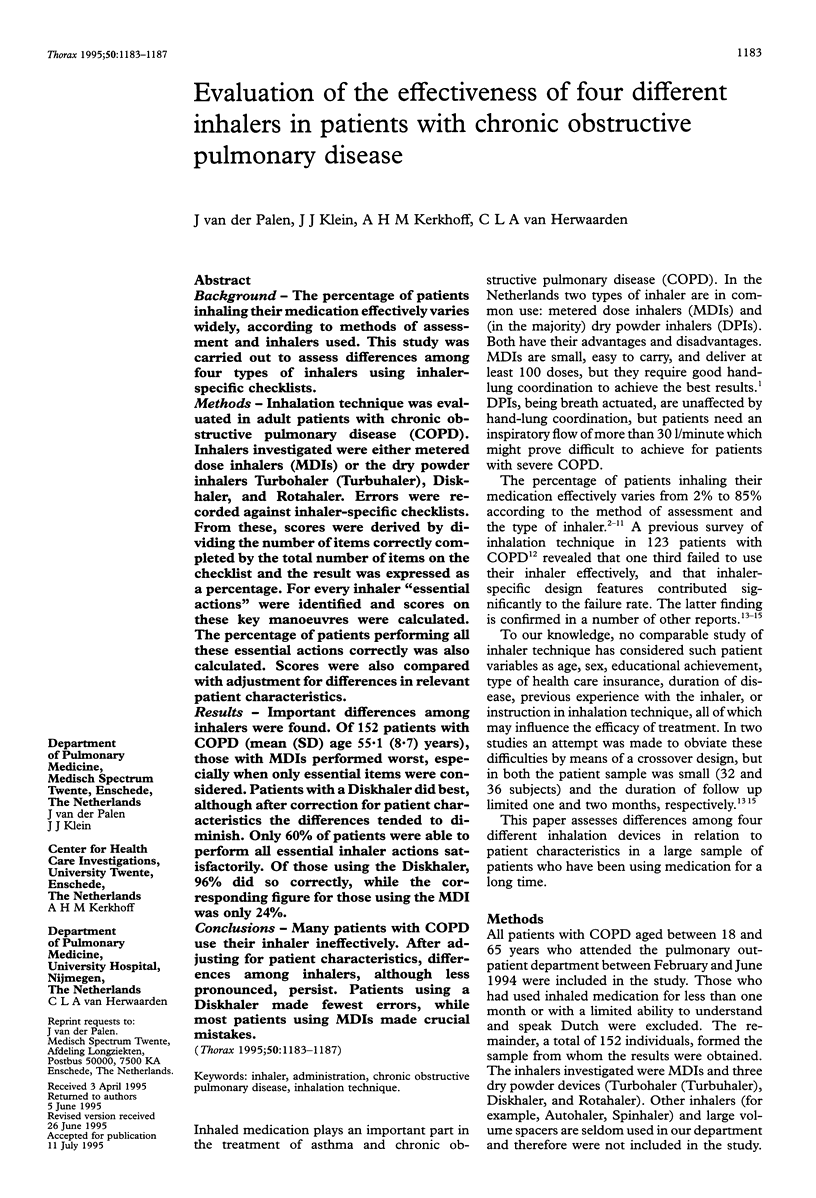
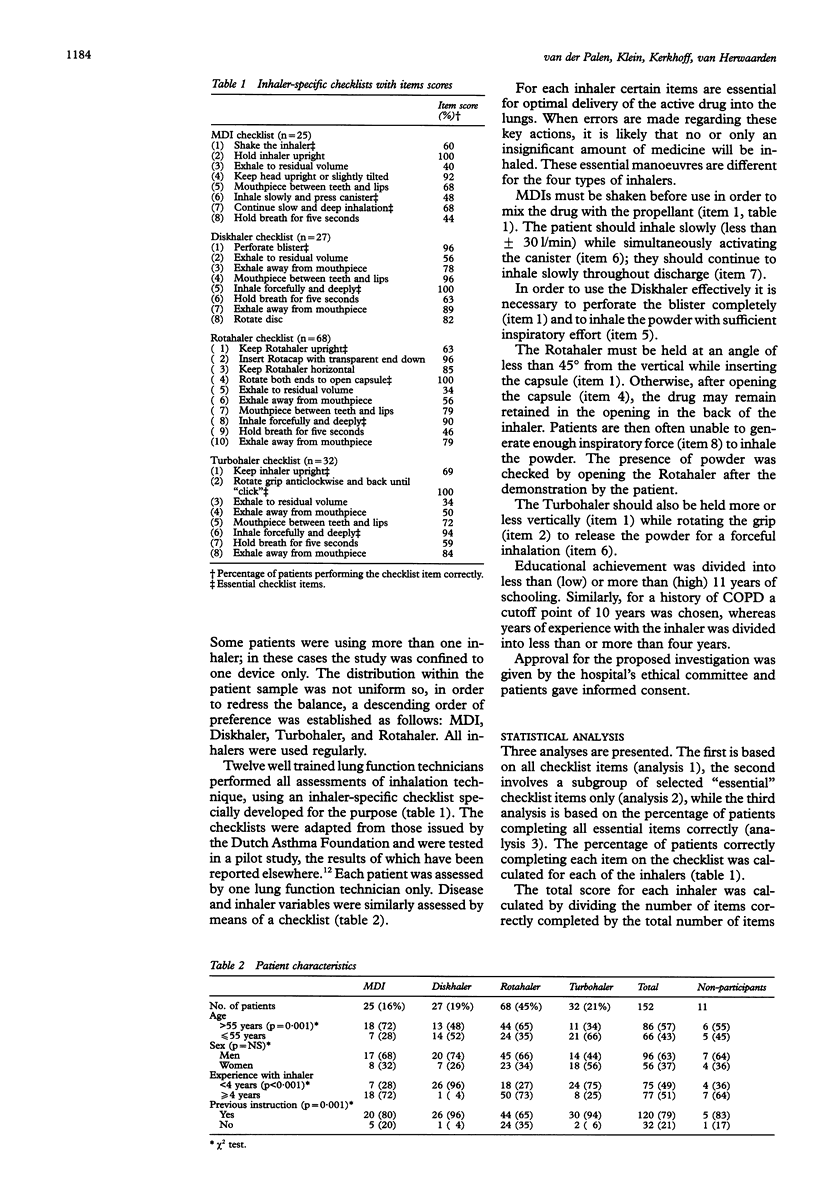
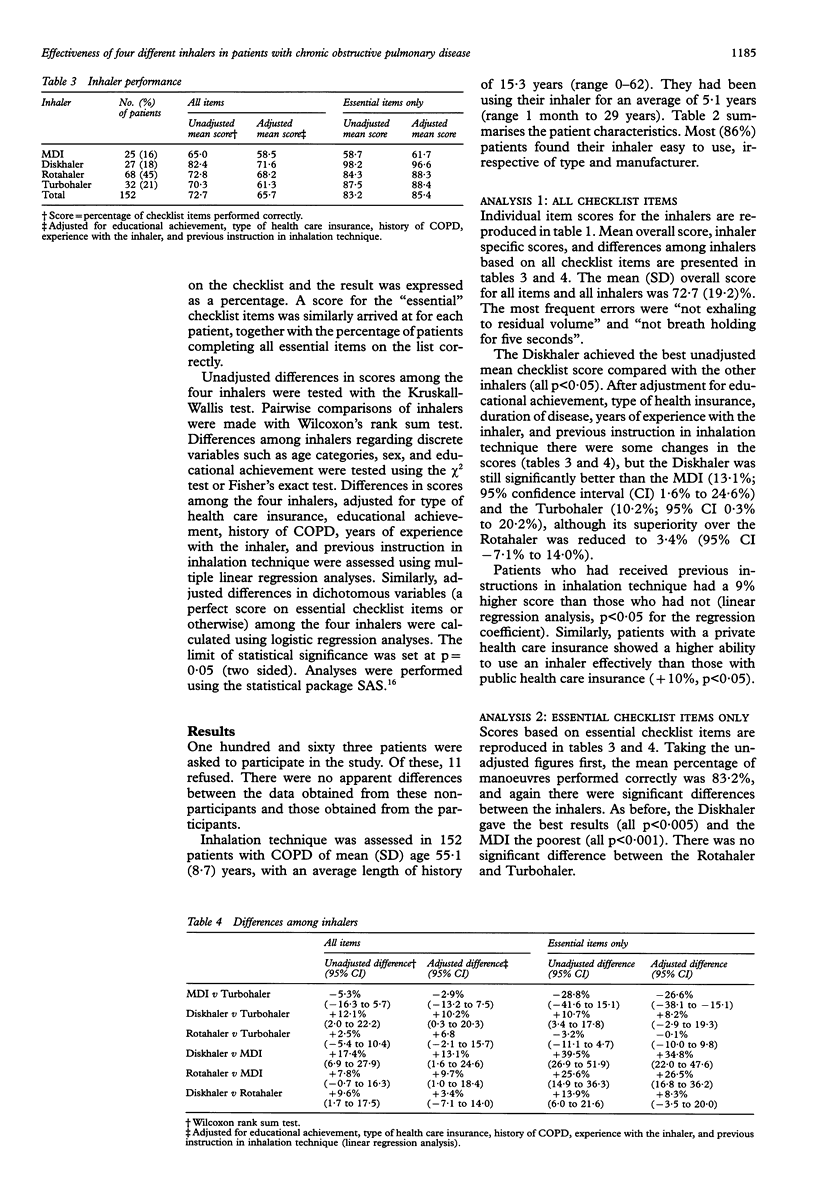
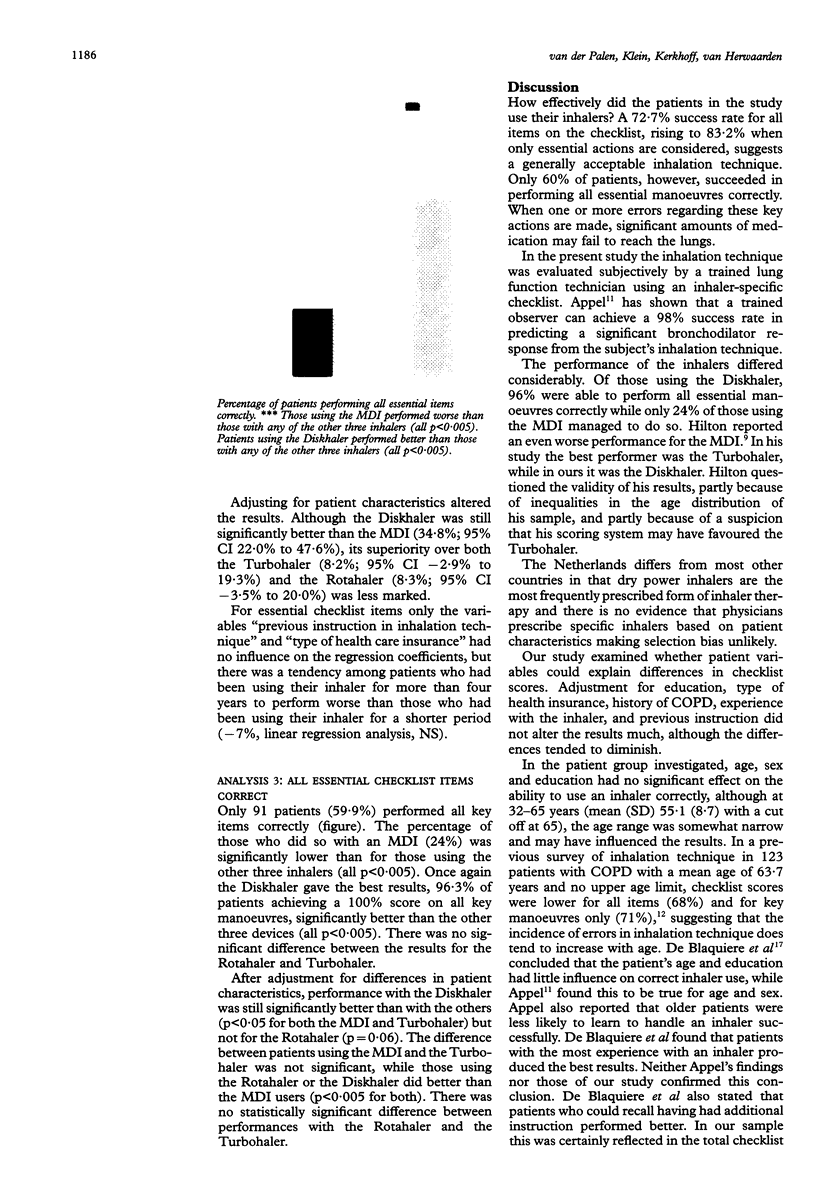
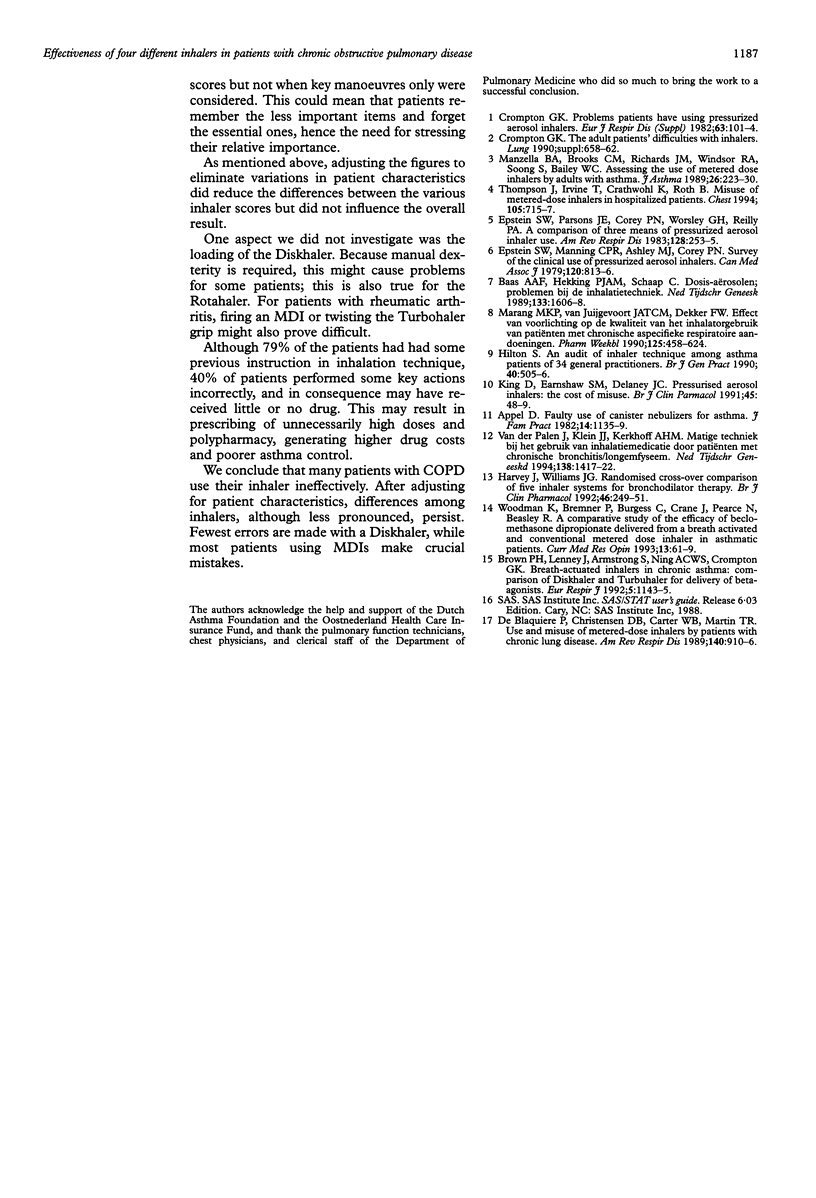
Images in this article
Selected References
These references are in PubMed. This may not be the complete list of references from this article.
- Appel D. Faulty use of canister nebulizers for asthma. J Fam Pract. 1982 Jun;14(6):1135–1138. [PubMed] [Google Scholar]
- Baas A. A., Hekking P. J., Schaap C. Dosis-aërosolen; problemen bij de inhalatietechniek. Ned Tijdschr Geneeskd. 1989 Aug 12;133(32):1606–1608. [PubMed] [Google Scholar]
- Brown P. H., Lenney J., Armstrong S., Ning A. C., Crompton G. K. Breath-actuated inhalers in chronic asthma: comparison of Diskhaler and Turbohaler for delivery of beta-agonists. Eur Respir J. 1992 Oct;5(9):1143–1145. [PubMed] [Google Scholar]
- Crompton G. K. Problems patients have using pressurized aerosol inhalers. Eur J Respir Dis Suppl. 1982;119:101–104. [PubMed] [Google Scholar]
- Crompton G. K. The adult patient's difficulties with inhalers. Lung. 1990;168 (Suppl):658–662. doi: 10.1007/BF02718191. [DOI] [PubMed] [Google Scholar]
- De Blaquiere P., Christensen D. B., Carter W. B., Martin T. R. Use and misuse of metered-dose inhalers by patients with chronic lung disease. A controlled, randomized trial of two instruction methods. Am Rev Respir Dis. 1989 Oct;140(4):910–916. doi: 10.1164/ajrccm/140.4.910. [DOI] [PubMed] [Google Scholar]
- Epstein S. W., Manning C. P., Ashley M. J., Corey P. N. Survey of the clinical use of pressurized aerosol inhalers. Can Med Assoc J. 1979 Apr 7;120(7):813–816. [PMC free article] [PubMed] [Google Scholar]
- Epstein S. W., Parsons J. E., Corey P. N., Worsley G. H., Reilly P. A. A comparison of three means of pressurized aerosol inhaler use. Am Rev Respir Dis. 1983 Aug;128(2):253–255. doi: 10.1164/arrd.1983.128.2.253. [DOI] [PubMed] [Google Scholar]
- Harvey J., Williams J. G. Randomised cross-over comparison of five inhaler systems for bronchodilator therapy. Br J Clin Pract. 1992 Winter;46(4):249–251. [PubMed] [Google Scholar]
- Hilton S. An audit of inhaler technique among asthma patients of 34 general practitioners. Br J Gen Pract. 1990 Dec;40(341):505–506. [PMC free article] [PubMed] [Google Scholar]
- King L. R. Neonatal circumcision in the United States in 1982. J Urol. 1982 Nov;128(5):1135–1136. doi: 10.1016/s0022-5347(17)53361-3. [DOI] [PubMed] [Google Scholar]
- Manzella B. A., Brooks C. M., Richards J. M., Jr, Windsor R. A., Soong S., Bailey W. C. Assessing the use of metered dose inhalers by adults with asthma. J Asthma. 1989;26(4):223–230. doi: 10.3109/02770908909073253. [DOI] [PubMed] [Google Scholar]
- Thompson J., Irvine T., Grathwohl K., Roth B. Misuse of metered-dose inhalers in hospitalized patients. Chest. 1994 Mar;105(3):715–717. doi: 10.1378/chest.105.3.715. [DOI] [PubMed] [Google Scholar]
- Woodman K., Bremner P., Burgess C., Crane J., Pearce N., Beasley R. A comparative study of the efficacy of beclomethasone dipropionate delivered from a breath activated and conventional metered dose inhaler in asthmatic patients. Curr Med Res Opin. 1993;13(2):61–69. doi: 10.1185/03007999309111534. [DOI] [PubMed] [Google Scholar]
- van der Palen J., Klein J. J., Kerkhoff A. H. Matige techniek bij het gebruik van inhalatiemedicatie door patiënten met chronische bronchitis/longemfyseem. Ned Tijdschr Geneeskd. 1994 Jul 9;138(28):1417–1422. [PubMed] [Google Scholar]



